Implementing a waste management plan in a bakery offers up a host of economical, social and environmental benefits. Even small steps can make a big difference.
Waste isn’t exactly sexy. But it is a highly topical, headline grabbing, emotive subject which, for bakery owners, can have a significant impact on the bottom line and public image. Businesses across the supply chain are doing their bit to reduce their environmental impact.
Gail’s Bakery, for example, has created a loaf called Waste Bread – made by turning surplus sourdough loaves into porridge and adding it to fresh dough. Others, like Roberts Bakery and Hovis, are looking to increase packaging recyclability.
Meanwhile, more than 90 food and drink sector organisations have pledged to halve food waste by 2030 as part of the Food Waste Reduction Roadmap (see p35).
Big and small actions like these help divert materials from landfill and push them up the waste hierarchy – a pyramid that outlines the most preferable way to deal with waste materials that all businesses must adhere to. Put simply, it’s a more advanced version of ‘reduce, reuse, recycle’, with recovery (energy-from-waste) and disposal (landfill) at the bottom.
So what more can bakers, their suppliers and customers be doing to reduce waste and surplus as well as increase recycling?
“Start by recording waste and wastage,” advises Duncan Glendinning, owner of Thoughtful Bakery. “That way you can evaluate the scale and cost of it, then start looking at practical ways of reducing it, before checking records to see that there has been a positive effect.”
This, Glendinning notes, allows Thoughtful Bakery to track how much is sent off for composting, recycling and landfill, which has resulted in less than 5% of its waste ending up in the latter.
“The benefits of the steps we take are a massive reduction in what we landfill and a reduction in our waste handling costs – most waste handling/recycling collection companies charge more to remove landfill than they do other waste,” he adds.
Team buy-in is crucial, particularly when separating materials into various bins, as it avoids unnecessary wastage and ensures items end up where they are supposed to.
“Where management deploys processes and systems to control waste streams but fails to explain them to those members of staff expected to implement them on a daily basis, the system is less effective due to a lack of ‘ownership’,” believes Steve Witt, managing director of Imperial Machine Company (IMC), which offers a range of waste management equipment. “If a ‘system champion’ is nominated to drive the initiative, targets are often exceeded.”
It will also help owners understand the composition of their waste, as this could differ based on factors including the type of operation, customer base and location.
For those with surplus, there are a number of routes to go down including donating to charity and offering to local farmers for animal feed. Chalk Hills Bakery in Reigate has found a novel use for its surplus through a deal with Crumbs Brewery. Leftover white bloomers, wheat sourdough and rye loaves are used by the brewery to make Bloomin’ Ale Lager, Sourdough Pale Ale and Ruby Rye Ale. There are numerous benefits.
“Crumbs pays a production price for the bread that has been unsold and we then have a cross-marketing boost,” says Chris Robinson at Chalk Hills Bakery.
The brewery takes about 50kg per quarter of each bread variety but, as demand grows, it will look to partner with other bakers on new brews so Chalk Hills isn’t creating bread just for the sake of it.
“The big difference for us is the environmental benefit,” Robinson adds. “Unsold bread that would have been destined for wastage is being ‘recycled’ and put to good use in an innovative way. This reduces wastage and the carbon footprint of having the bread sent to refuse.”
But surplus goods are far from the only component of a bakery’s waste stream. Packaging can be a major contributor. For Dunn’s Bakery in Crouch End, paper is the largest component, followed by plastic items such as plastic-lined bags and pails for jams and ingredients.
Although recycled, plastic remains the biggest concern of MD Lewis Freeman who says he is taking steps to reduce this. “We buy things in metal containers over plastic ones where possible, such as sunflower oil.”
It’s a similar story at Thoughtful Bakery in Bath. “Everything is so over-packaged these days, so my advice would be to challenge your supplier,” says Glendinning. Its coffee roaster was receptive and now provides beans in plastic tubs instead of foil-lined heat-sealed bags, and these are collected as part of a take-back scheme when new produce is delivered.
The bakery also offers “too good to throw away” flour sacks to customers to utilise for garden waste, mulching or any other use they can find. “We’ve also been collecting loose seed that falls off our wholemeal seeded loaves and intend to offer these
up in small paper bags for people to feed birds with,” he adds.
Increasing the visibility of activities such as these is a great way to engage with the local community. Dunn’s, for example, has followed the likes of Pret A Manger and Starbucks by offering a 25p discount to customers who bring in a reusable cup for their coffee. It also charges 5p for plastic bags in line with other retailers, with 100% of the money raised donated to charity.
Small differences add up, notes Freeman. “Even though we’re a small entity in our own right, we’re still reducing the number of cups that go to landfill,” he says.
Since introducing the plastic bag charge Freeman says the amount of bags given to customers has “absolutely plummeted”. “We’re privileged that our local community really cares and is constantly putting the pressure on us, as are our staff,” adds Freeman. “If your staff care and your customers care, then you will do it.”
Is artificial intelligence the key to a low-waste future?
Waste prevention begins with waste measurement. Without a decent understanding of what’s leftover at the end of the day, it’s nearly impossible for a bakery to address any issues.
“In line with the need to prevent rather than cure waste there has to be accurate forecasting to limit surplus production,” explains Jane Tyler, managing director of Cybake system supplier RedBlack Software. “You can never eliminate surplus production but you can control it.”
Historically, she notes, production has been a result of educated guesswork but this can lead to high levels of waste, particularly if the figures aren’t reviewed frequently. By accurately capturing waste data through the use of technology, bakers can better plan their production and reduce surplus.
“That’s not as easy as it sounds,” adds Tyler. “If you want people to do it accurately you need to give them the right tools. This could be done on a tablet, with all the products listed, and staff can quickly and easily get the waste data into the system.
“It’s a very fundamental and basic solution, but a lot of people don’t get this right.”
Taking this a step further is artificial intelligence (AI). “It won’t be long before bakers are using artificially intelligent systems to help them predict what to make,” Tyler adds. “Bakers need to be aware of this. The ones that adopt this technology sooner are the ones who will see the profitability impact and a reduction in waste.”
AI is becoming increasingly commonplace with supermarkets and big manufacturers, but a new company is hoping to make it available to the masses sooner rather than later.
Start-up CatsAI is specifically targeting small bakeries with its AI system, claiming a sales uplift of up to 20% and a reduction in waste of as much as 80% for those who use it.
The company is currently trialling the technology with five regional bakery businesses, which have a total of 80 sites across the UK, as part of a pilot programme.
“There’s a complete gap for small and medium enterprises in getting access to really affordable technology which has been the preserve of big corporates,” says Paul Staples, one of the four co-founders of CatsAI.
All bakers have to do is give CatsAI access to their EPoS data and the ‘brain’ will do the rest.
“We take everything from school holidays, transport, weather and roadworks – we’ve got around about 10,000 data points – and allow the algorithm to crunch the numbers,” he adds.
Bakers then receive an email with what the system suggests they bake, offering a small range for them to work within. After the trials are complete, CatsAI is hoping for nationwide rollout in 2019.
“If bakers reduce their waste by even four or five loaves a day, they’ll be making money,” Staples concludes.
Government unveils plastic packaging tax
UK businesses, including bakeries, could be taxed for using plastic packaging thatis not made from at least 30% recycled materials, the government announced in its 2018 Autumn Budget.
The plastics packaging levy was unveiled by Chancellor Philip Hammond, who said it would help reduce the “scourge of plastic” littering the planet. If it comes into force, it would apply to the production and import of plastic packaging from April 2022.
Meanwhile, plans have been set out to ban the distribution and sale of plastic straws and drinks stirrers. The ban would come into force between October 2019 and October 2020, subject to a consultation launched by environment secretary Michael Gove.
UK Food Waste Reduction Roadmap
The UK food and drink sector – including baked goods suppliers such as Hovis, Warburtons and Premier Foods – is on a mission to help halve food waste by 2030.
To achieve this, the Waste & Resources Action Programme (WRAP) and IGD in September unveiled the Food Waste Reduction Roadmap that 90 organisations, including the aforementioned businesses, have signed up to so far. Signatories are required to implement a three-part strategy to meet the waste reduction target, set as part of the global Sustainable Development Goal (SDG) 12.3.
The first part, ‘target’, requires them to set a food waste reduction target for UK operations aligned to the SDG. The second, ‘measure’, means they must measure this in a consistent way and share lessons they have learned with the wider group. Finally, they need to ‘act’ to reduce waste while working with suppliers and helping educate consumers to make changes.
Large businesses are also asked to publicly report individual UK company results or work towards this best practice as well as share data with those responsible for tracking it, ie WRAP and IGD.
There are a number of milestones along the journey, including the target to have 50% of the UK’s largest food and drink businesses measuring, reporting and acting to reduce food waste by September 2019, with all 250 companies doing so by 2026.
“This roadmap is hugely ambitious, and I’m delighted the UK is the first country anywhere to set a nationwide plan towards delivering its part in SDG 12.3,” says WRAP chief executive Marcus Gover.
“There are many businesses working hard already, but many more need to focus on food waste.”








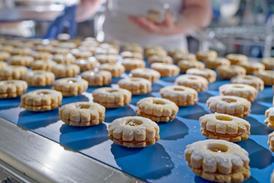

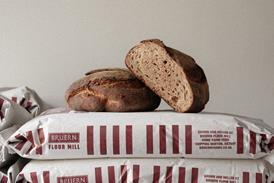










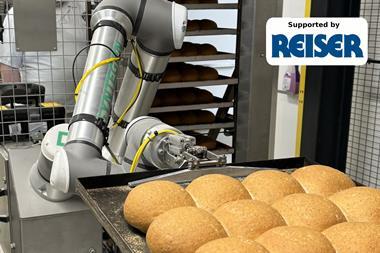
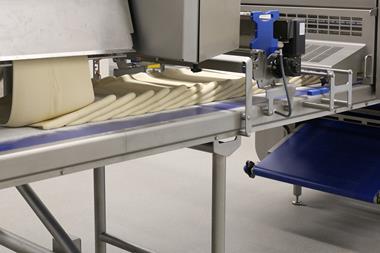

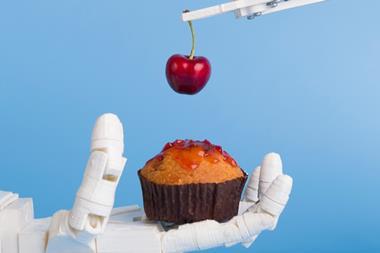

No comments yet